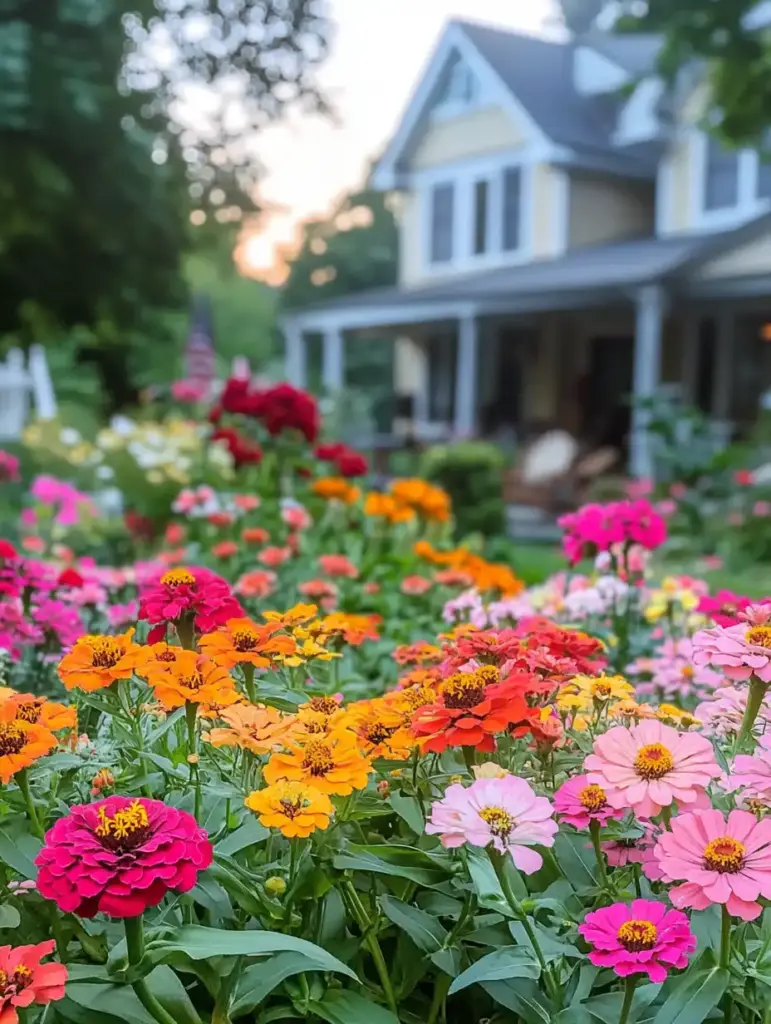A well-designed flower garden can transform your landscape into a vibrant, inviting retreat. Whether you’re working with a small patio or a sprawling backyard, the right combination of blooms can dramatically improve curb appeal and create a soothing, seasonal sanctuary. If you’re looking for inspiration, explore these backyard flower garden ideas to spark creativity. From full-sun perennials to cascading blooms, flower garden ideas offer endless possibilities for showcasing color, height, and texture—while attracting pollinators and adding structure to your yard.
Before diving into planting, consider key factors like sunlight exposure, soil quality, and drainage. These determine which flowers will thrive and how lush your garden will become. For a head start, check out 6 ways to improve garden soil and the best perennials for a low-maintenance backyard. Don’t forget to incorporate shrubs, evergreens, or features like raised beds to boost both beauty and plant health. Our guide to raised bed gardening mistakes can help you avoid common pitfalls.
In this guide, you’ll discover 18 large flower garden ideas tailored for backyard landscaping, filled with practical tips and visual design inspiration—whether you’re a seasoned green thumb or just getting started on your gardening journey.
Table of Contents
🌼 1. Uplift Your Farmhouse Facade with Cottage Charm
Transform the front of your farmhouse into a blooming showcase with a thoughtfully layered mix of vibrant perennials and seasonal favorites. A combination of hydrangeas, chrysanthemums, and roses can bring warmth and texture to the exterior, especially when planted along a stone walkway. These lush flower garden ideas add a cottage-style touch that feels both classic and welcoming.
To maximize curb appeal:
- Mix colors like soft pink, bold orange, and creamy white for visual depth.
- Use staggered heights—roses in the back, chrysanthemums in the middle, and low-growing hydrangeas upfront.
- Accent with greenery like hostas or dusty miller to fill in the gaps and soften transitions.
This setup isn’t just visually appealing—it also creates a pollinator-friendly zone that buzzes with bees and butterflies from spring through fall.
🌺 2. Create a Border with Flower Power
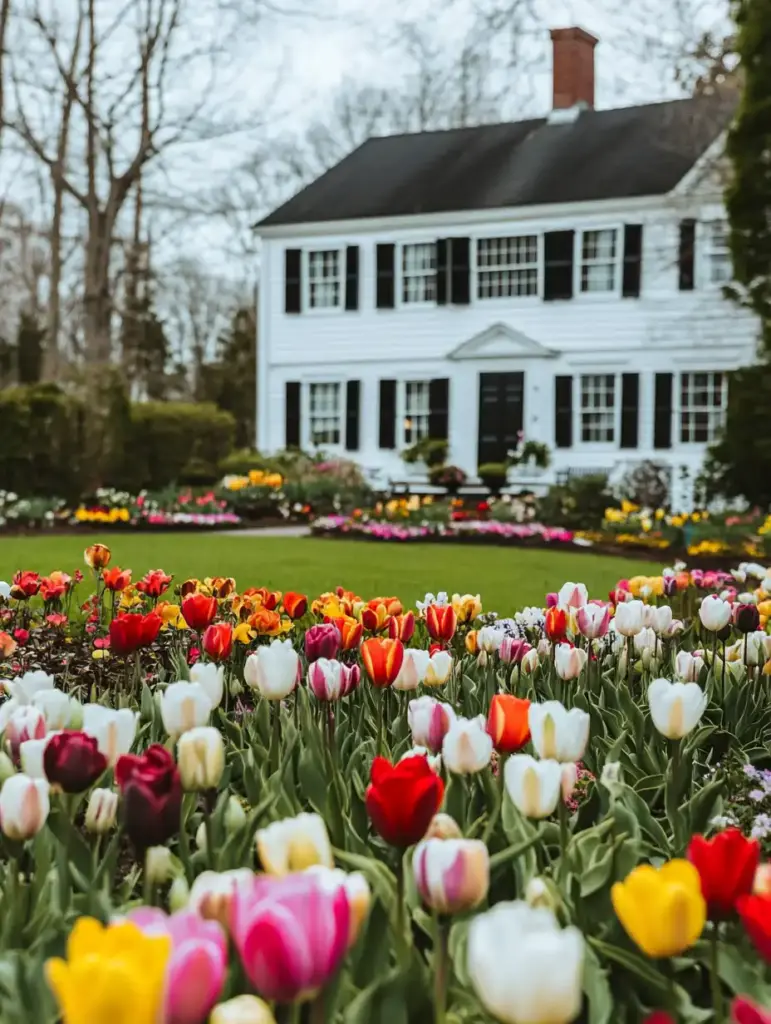
Defining your lawn or garden edges with vibrant blooms is one of the most practical and beautiful flower garden ideas. A border garden frames your yard, adds symmetry, and helps transition from lawn to garden with ease. Try using a combination of tulips, asters, salvia, and daisies to form a lively, structured edge that blooms across seasons.
Key border planting tips:
- Layer heights: Place taller plants like asters and salvia at the back, medium tulips in the middle, and low-growing daisies in front.
- Choose complementary colors: Blend cool tones like purple and blue with warmer reds and yellows for contrast.
- Repeat plant groupings along the edge to maintain visual rhythm and cohesion.
Borders not only define space—they guide the eye and create a clean, finished look that’s ideal for both formal and casual landscapes.
🌷 3. Go Colorful and Bold with Layered Textures
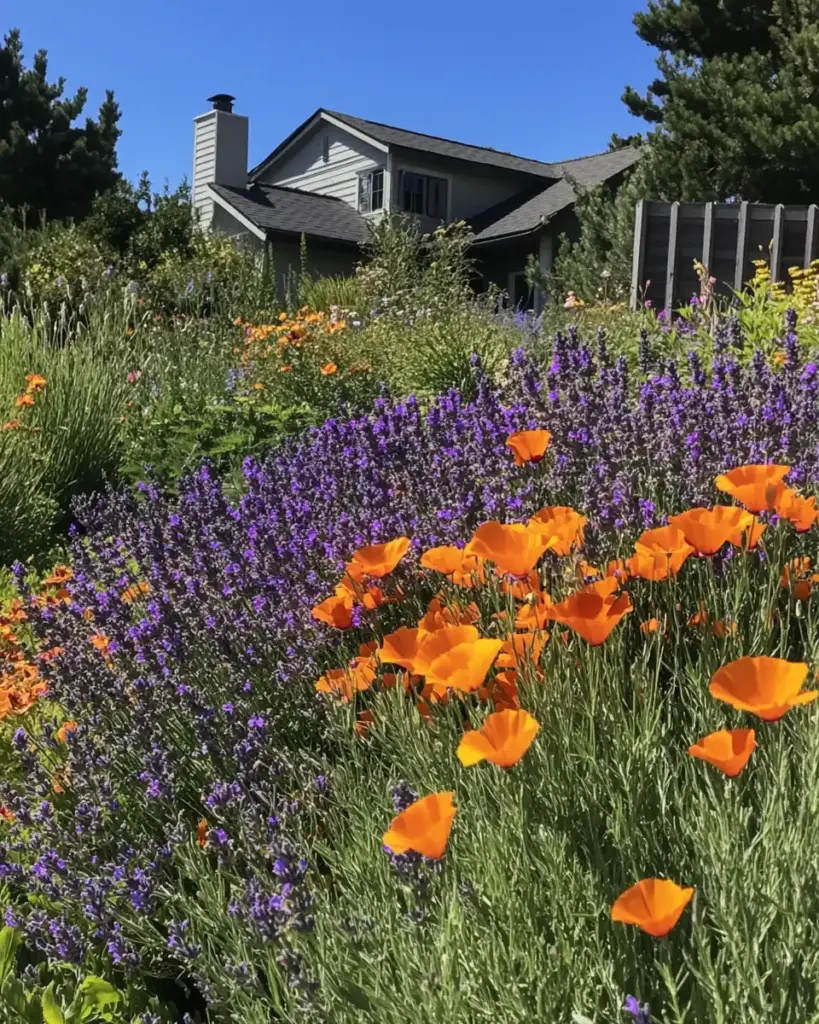
If you’re looking to make a big visual impact, flower garden ideas that embrace bold color combinations and structural planting are a fantastic way to turn heads. Start with a backbone of hardy shrubs and ornamental trees, then fill the space with vibrant blooms like catnip, California poppies, and perennial sage for a tapestry of color and movement.
Why this style works:
- Shrubs like boxwood or spirea provide evergreen structure year-round.
- California poppies offer a wild, carefree look with golden tones that glow in the sun.
- Catnip and sage attract pollinators while adding soft purples and silvery greens to the mix.
Don’t be afraid to mix annuals and perennials—it adds diversity to bloom times and textures. Keep color theory in mind: pairing complementary hues like orange and purple or yellow and violet will make your garden pop, especially in large flower beds.
🪵 4. Add Some Mulch for Contrast and Plant Health
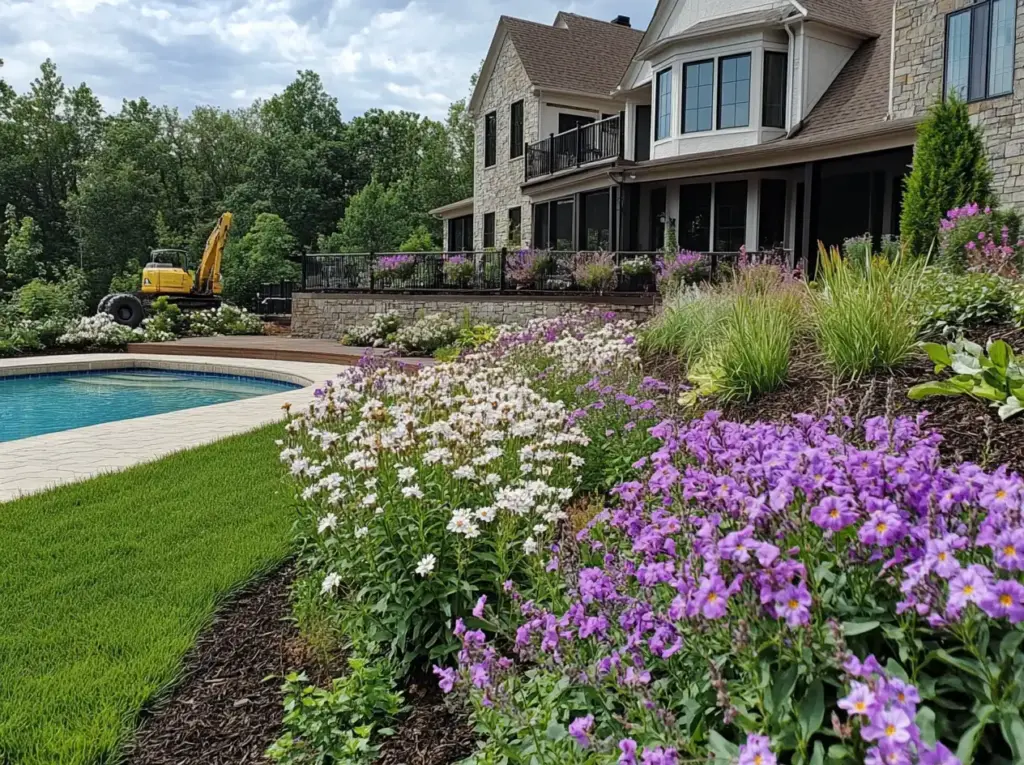
Among the most underrated flower garden ideas is the use of mulch—not just for function, but for visual impact. A layer of rich brown or black mulch does more than conserve moisture and suppress weeds; it also provides a dark, earthy backdrop that makes bright flower colors pop.
For a striking, healthy garden:
- Use mulch to outline flower beds, giving a polished, intentional look.
- Choose flowers like dianthus, lavender, and sage—their vibrant hues and silvery foliage stand out beautifully against darker mulch.
- Incorporate ninebark or ornamental trees around the edges to add vertical interest and some shade balance.
Mulch helps regulate soil temperature and prevents erosion, making it essential in both raised beds and in-ground plantings. Visually, it unifies the bed, ensuring your flowers shine without distractions.
🌿 5. Adopt Raised Gardens for Beauty and Productivity
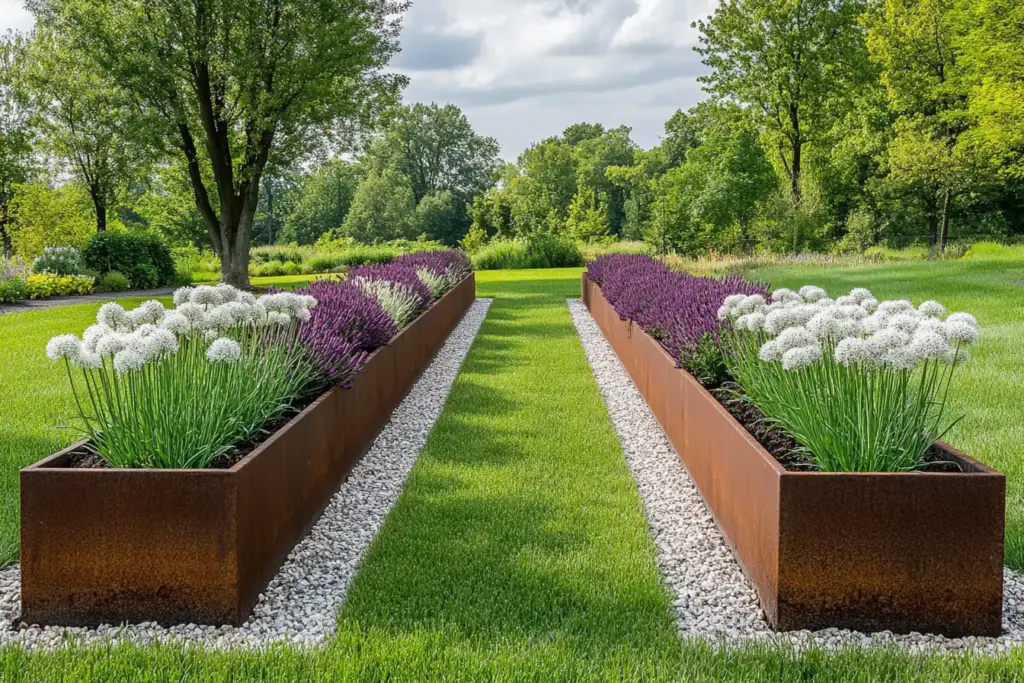
One of the smartest flower garden ideas—especially for those with poor soil or limited space—is to embrace raised garden beds. These elevated planters offer improved drainage, better soil control, and easier access for planting and maintenance. Even better? You can combine flowers with vegetables to create a stunning and productive garden, often referred to as a potager.
Here’s how to make it work:
- Line your raised beds with nectar-rich flowers like alliums, nasturtiums, or marigolds to attract beneficial pollinators.
- Mix in herbs like basil or thyme, which complement both vegetables and flowering plants.
- Use beds made of wood, concrete, or metal depending on your aesthetic and budget.
This approach blends function and beauty while encouraging biodiversity in your garden. Raised beds can also be placed in sunny corners of patios or along fences, offering structure and visual interest without overwhelming your space.
🚶♀️ 6. Walk in Serenity with Floral Pathways
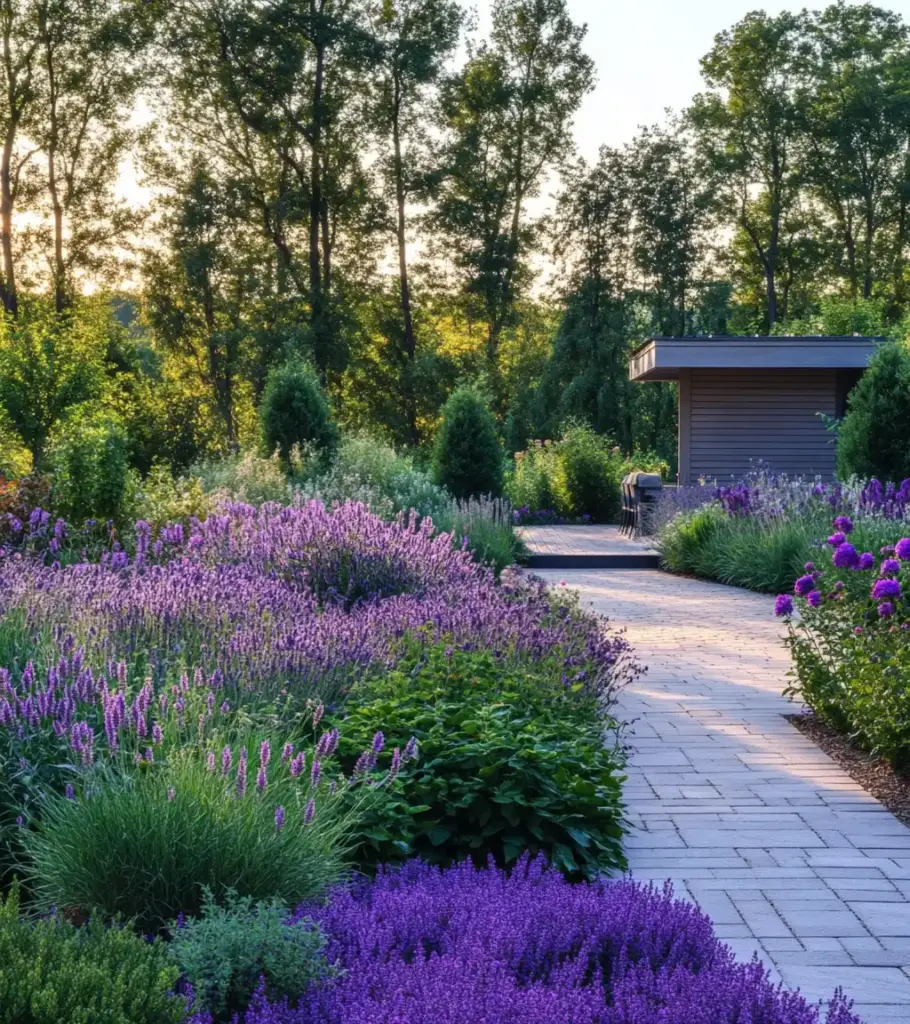
Few flower garden ideas are as enchanting as a garden path flanked by swaying blooms and fragrant herbs. Designing a walkway bordered with petunias, lavender, and ornamental grasses invites peaceful strolls and enhances the sensory experience of your garden.
How to create your serene stroll:
- Petunias provide a long blooming season and come in vibrant shades that edge paths with cheerful color.
- Lavender adds height, texture, and fragrance—plus it’s drought-tolerant and pollinator-friendly.
- Tall grasses, such as fountain grass or blue fescue, bring movement and softness that frame the path naturally.
Keep your paths wide enough for comfortable walking—ideally 2–3 feet—and use materials like flagstone, gravel, or reclaimed bricks for rustic charm. Whether it winds through the backyard or connects different garden zones, a flower-lined path turns an ordinary stroll into a tranquil retreat.
🌈 7. Highlight Curves to Guide the Eye
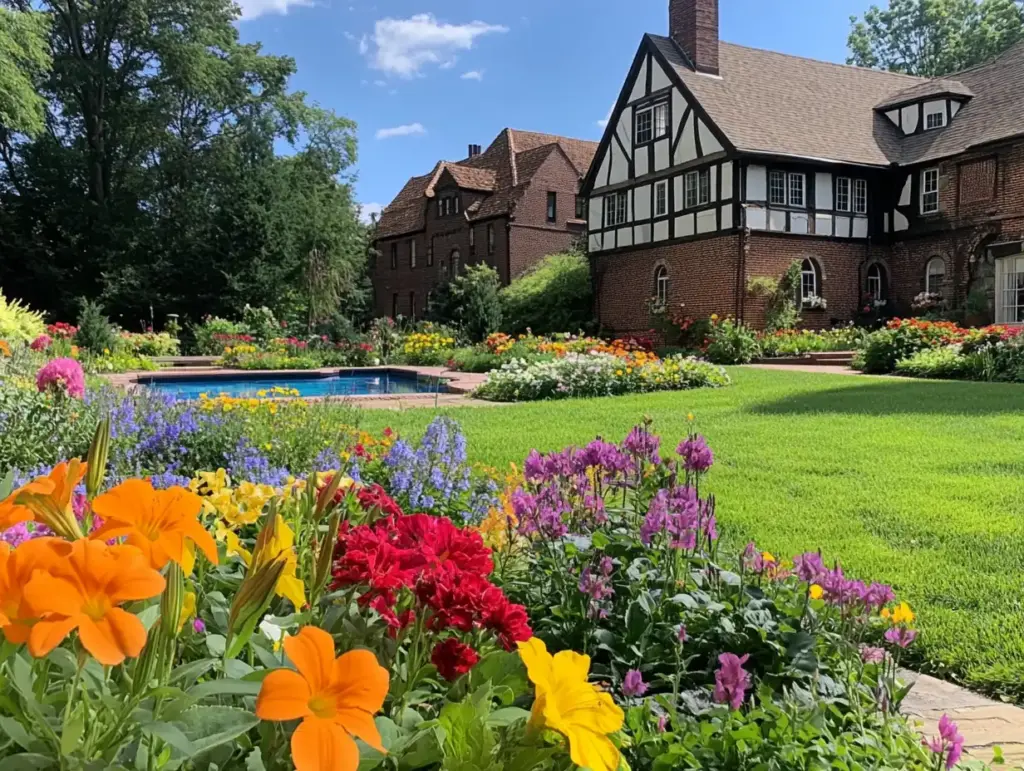
If your garden has gentle bends or rounded lawn edges, accentuating those curves with bold floral planting is one of the most effective flower garden ideas for adding elegance and flow. By using plants that follow the garden’s natural lines, you guide the viewer’s gaze and create dynamic movement within the space.
Perfect plants to enhance curves:
- Helenium ‘Salsa’, with its fiery red and orange blooms, draws attention and mirrors the energy of curved garden edges.
- Nicotiana sylvestris (flowering tobacco) adds vertical drama and a subtle evening fragrance.
- Plant in staggered clusters along curves, using repetition to emphasize rhythm and form.
Pairing these vibrant blooms with curved pathways or rounded lawns creates a natural sense of continuity. It also softens hardscape lines and encourages a slow, wandering walk through your garden.
🌲 8. Add Some Height for Vertical Interest
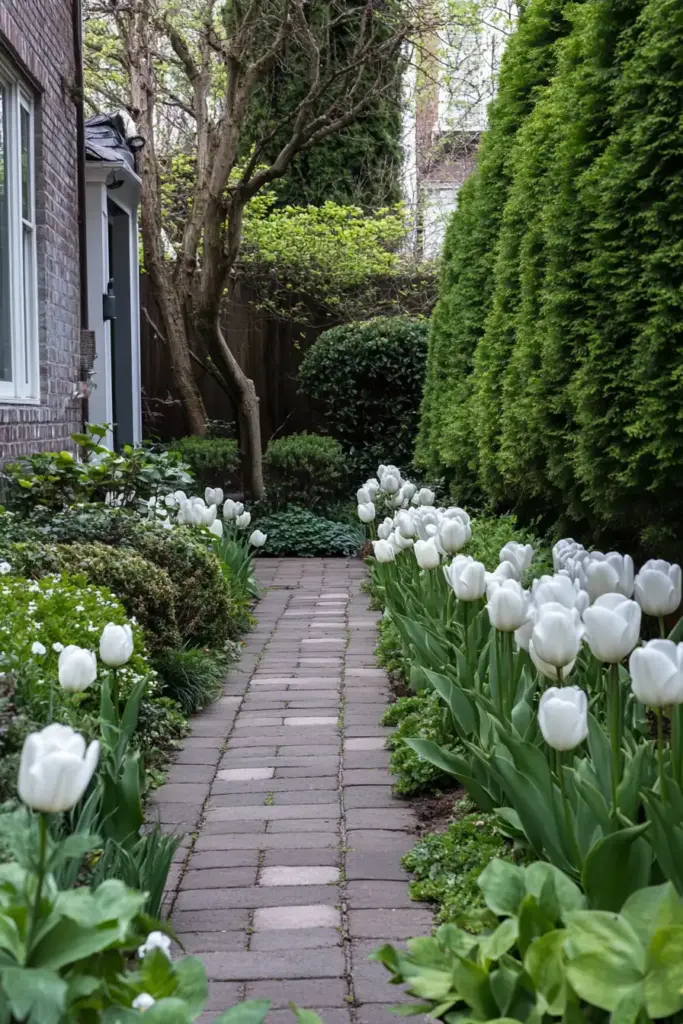
Flat gardens can feel one-dimensional—but by introducing vertical elements, you can transform your yard into a layered floral landscape. Incorporating height is one of the most impactful flower garden ideas, as it draws the eye upward and creates a sense of enclosure and grandeur.
Smart ways to add height:
- Plant slender evergreens like ‘Tiny Tower’ Italian cypress for architectural rhythm.
- Use flowering shrubs such as Viburnum davidii, Spiraea japonica, or Osmanthus fragrans for mid-level structure and seasonal blooms.
- Fill in with tall flowers like white tulips, pansies, Impatiens, and the graceful Francoa ramosa to bridge the gap between low borders and taller shrubs.
Vertical planting is also a great solution for small spaces or garden beds near fences and walls. It adds drama, depth, and a more immersive feel, turning a simple flower bed into a multi-tiered display.
🍃 9. Soften Your Landscape with Trailing and Creeping Plants
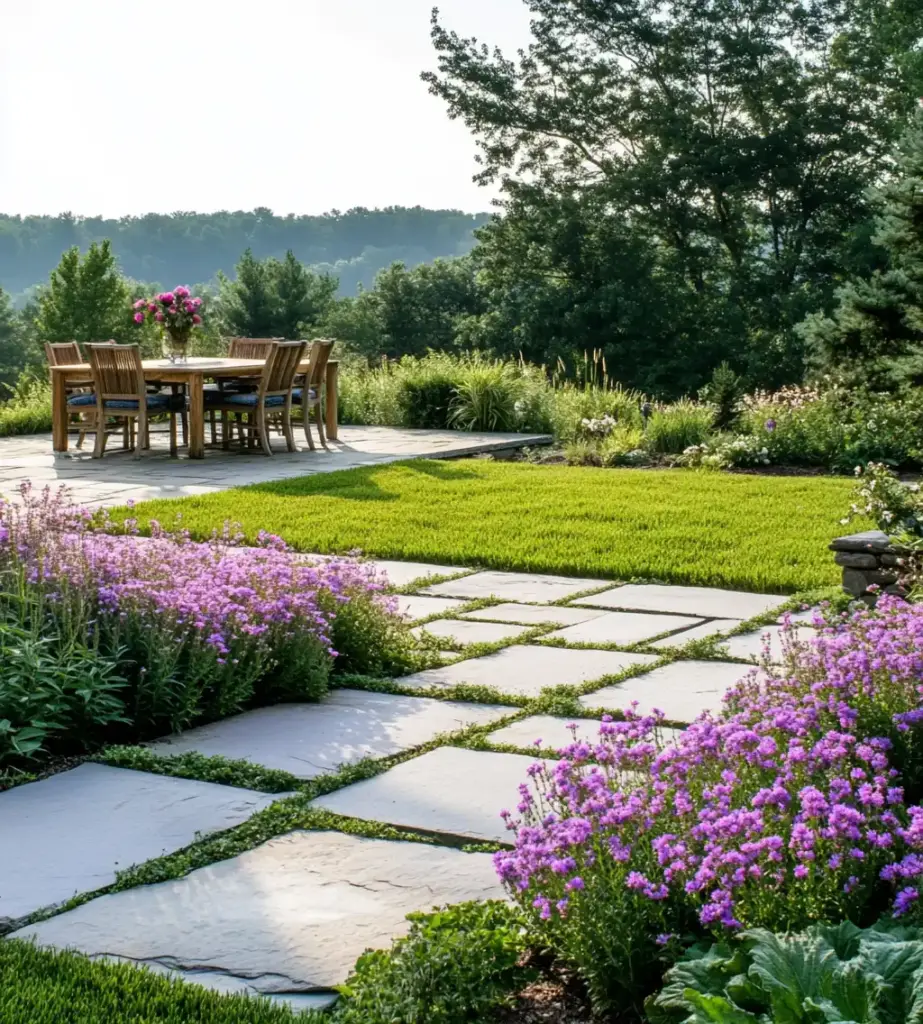
Hard lines from patios, stone paths, or retaining walls can make a garden feel rigid or overly structured. One of the most natural-looking flower garden ideas is to soften those edges using low-growing, trailing plants that blur boundaries and add movement.
Ideal plants to soften the landscape:
- Phlox subulata (creeping phlox): This ground-hugging perennial creates a lush carpet of color in spring.
- Crackerjack Dianthus or other compact varieties: Bright blooms spill gently over stone or gravel, blending textures beautifully.
- Tuck trailing plants into gaps between stones, along patios, or at the edge of raised beds for a seamless transition between hardscape and greenery.
This technique not only enhances visual softness, but also helps prevent soil erosion and fills in bare patches. It’s especially effective in rustic or cottage-style gardens, where a “perfectly imperfect” look adds character and charm.
🏡 10. Embrace English Garden Style for Timeless Charm
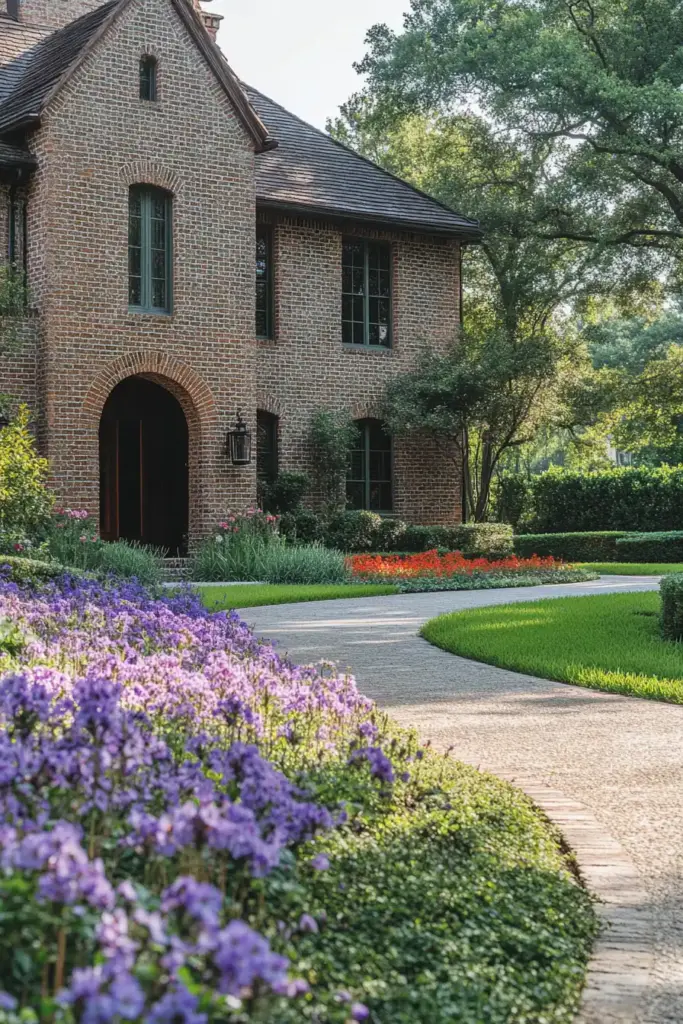
The English garden style is one of the most beloved flower garden ideas, known for its rich layers, informal design, and romantic color palettes. It’s a celebration of abundance—packed with a variety of perennials, blooming shrubs, and nectar-rich flowers that delight both humans and pollinators alike.
How to capture the English garden look:
- Focus on dense, slightly wild planting with overlapping colors and textures.
- Choose classic flowers like roses, lupines, delphiniums, and foxgloves.
- Incorporate shallow, open flowers to attract butterflies, bees, and hummingbirds—think scabiosa, echinacea, and verbena.
- Mix in old-world elements like stone borders, wrought iron fences, or arbors to complete the look.
Though it may appear chaotic at first glance, a great English-style garden follows intentional layering and repetition of plant types to maintain flow. It’s the perfect blend of structured spontaneity and colorful charm.
🏵️ 11. Inspire with a Cottage Garden Full of Heirloom Beauty
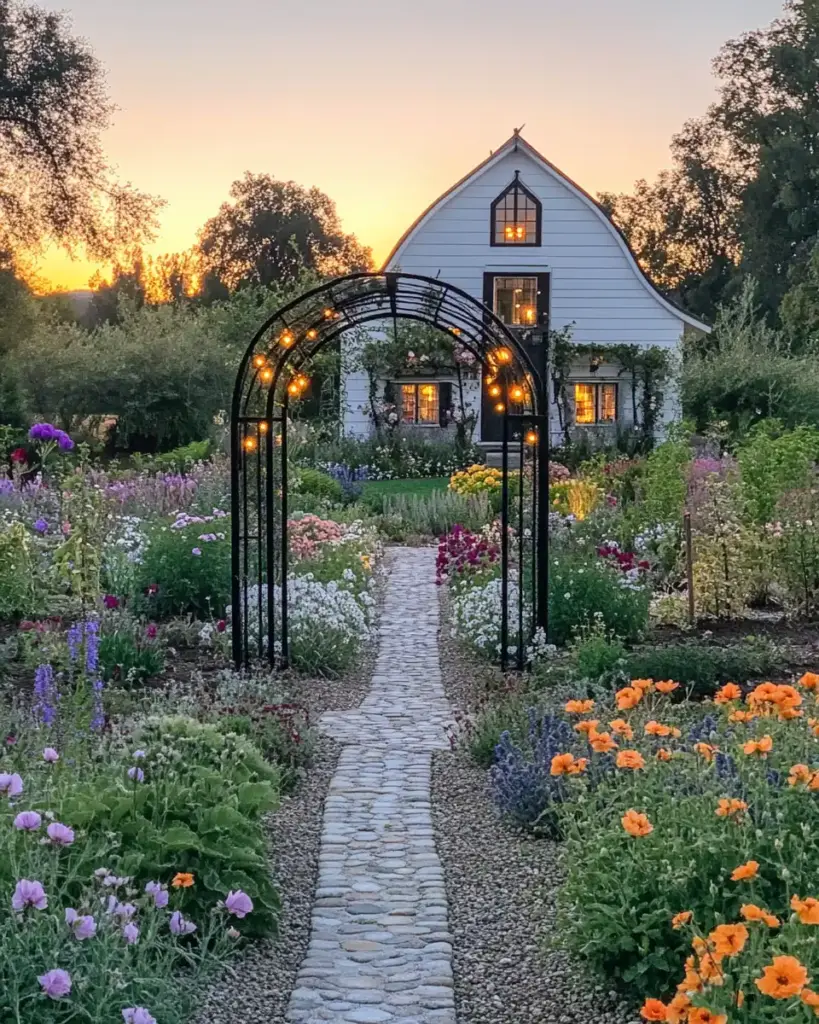
For gardeners who love nostalgia and whimsy, cottage gardens are among the most soul-soothing flower garden ideas. These gardens are informal, lush, and bursting with color—often featuring heirloom plants and fragrant flowers that have stood the test of time.
Signature elements of a cottage garden:
- Include time-honored blooms like lavender, geraniums, hollyhocks, and old English roses.
- Choose a limited color palette—like soft pinks, creamy whites, and deep reds—to maintain cohesion.
- Plant flowers closely together along borders, around paths, or beside picket fences for a free-flowing effect.
- Repeat key plant types throughout to create visual unity despite the “wild” style.
These gardens don’t just look charming—they support biodiversity and invite bees, butterflies, and beneficial insects. With their mix of textures and scents, cottage gardens offer a sensory retreat that feels both timeless and deeply personal.
🌼 12. Go for Raised Garden Beds for Clean Lines and Easy Care
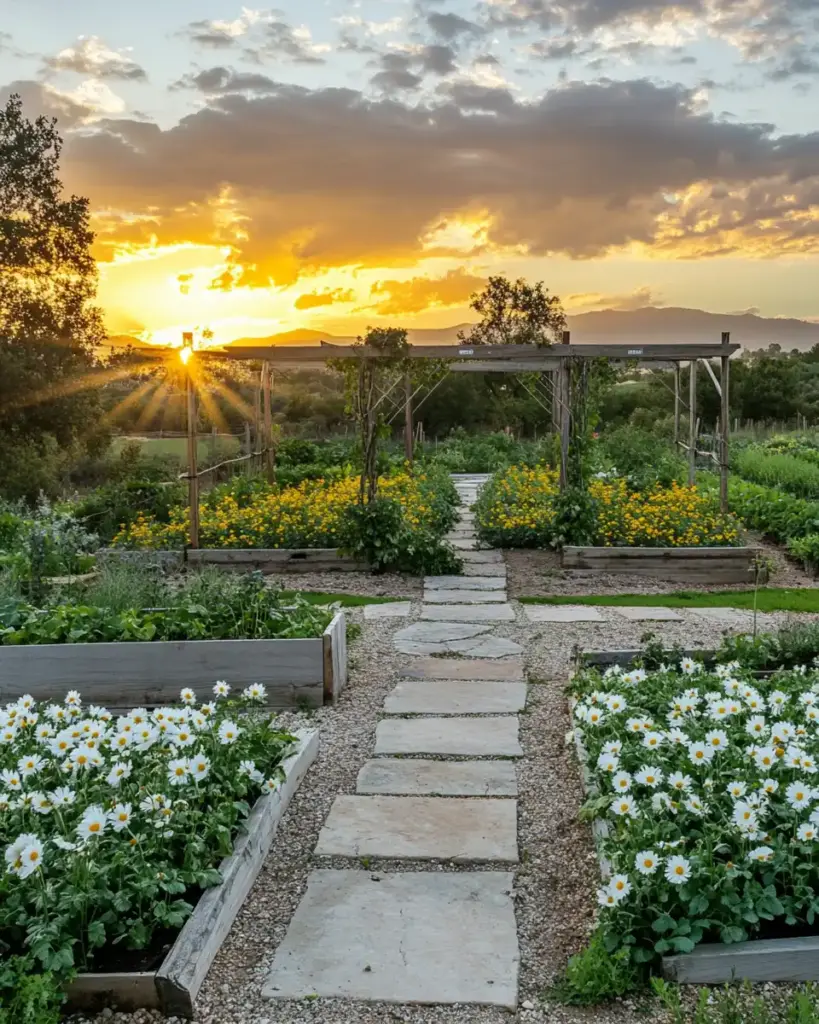
If you’re looking for one of the most versatile flower garden ideas, consider adding raised garden beds to your landscape. These elevated planters not only offer better soil control and drainage but also create a clean, organized look that’s perfect for both beginners and experienced gardeners.
Benefits of raised garden beds:
- Great for challenging soil conditions—especially clay-heavy, rocky, or sandy ground.
- Ideal for maintaining neat edges and preventing invasive spread.
- Easier on the back and knees, making planting and weeding more comfortable.
Incorporate visually pleasing beds made of concrete, wood, or metal, and fill them with bold color contrasts—such as white and yellow blooms like daisies, marigolds, or zinnias. These beds also allow you to mix flowers with herbs and veggies for a beautiful and productive garden space.
Raised beds bring structure to your garden and give each plant the room it needs to flourish.
🌸 13. Define Borders for Structure and Flow
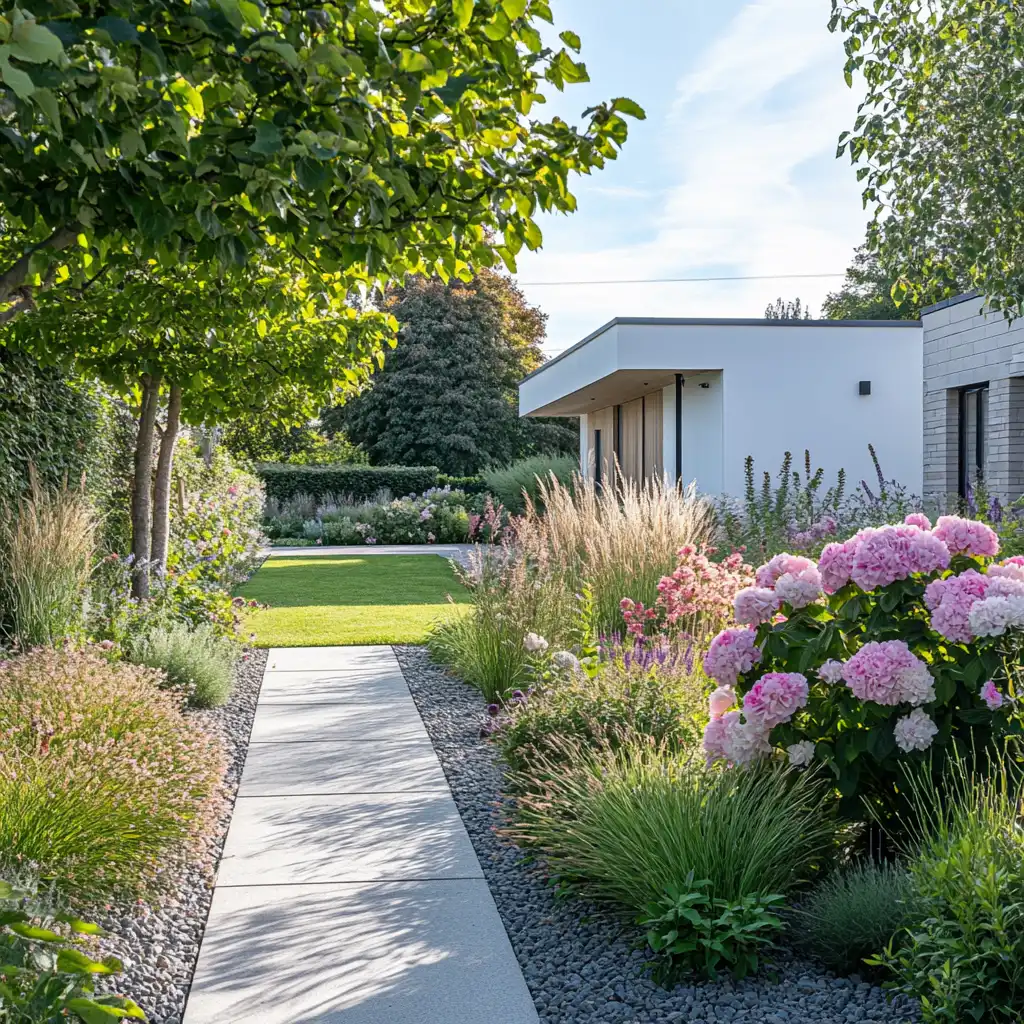
Well-defined borders are essential for giving your garden visual clarity and a polished appearance. When it comes to impactful flower garden ideas, using flowers to frame pathways or divide garden zones can create harmony while showcasing your favorite blooms.
Here’s how to master the border game:
- Plant hydrangeas for volume and color—perfect for anchoring the sides of walkways.
- Add thalictrum (meadow rue) for vertical accents and delicate texture.
- Use a mix of flower heights to build a layered effect—tall in back, mid-height in the middle, and compact varieties along the edge.
- Define edges with natural stone, bricks, or metal edging to prevent grass from creeping into your flower beds.
A well-designed border does more than organize space—it guides the viewer’s eye, enhances curb appeal, and supports easy maintenance. When paired with bold blooms, it turns even the most basic garden layout into a structured yet inviting landscape.
🌾 14. Opt for a Wild Look with a Naturalistic Garden
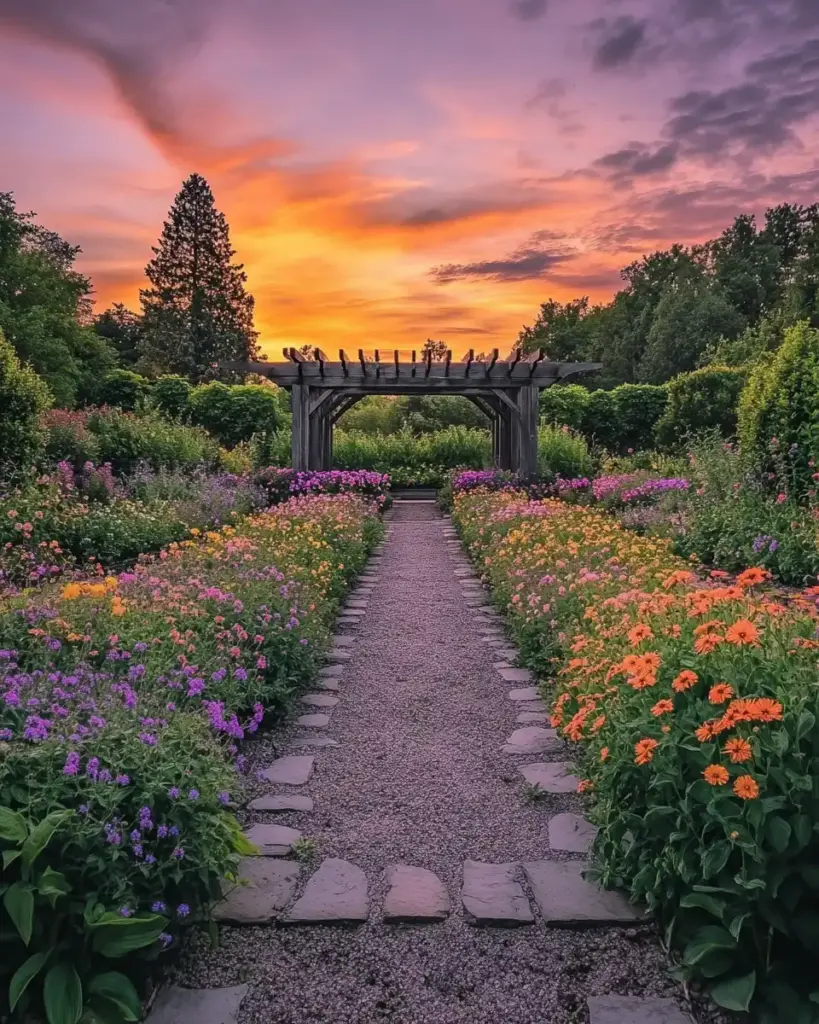
If you prefer a less structured, free-spirited design, embracing a wildflower-inspired aesthetic is one of the most rewarding flower garden ideas. A naturalistic approach celebrates the beauty of organic shapes, irregular spacing, and an ever-changing palette of blooms.
Key elements for a wild garden:
- Use hardy, low-maintenance flowers like daylilies, dahlias, and gomphrena that thrive with minimal care.
- Let plants self-seed and spread naturally, allowing the garden to evolve over time.
- Add a centerpiece like a pergola, trellis, or rustic bench to anchor the space and provide height.
- Incorporate native species to support local wildlife and pollinators.
Wild-style gardens require less grooming and fertilizing but still offer spectacular seasonal displays. They’re perfect for larger backyards where controlled chaos brings life, movement, and a touch of meadow magic to your landscape.
🪴 15. Introduce Planters for Flexibility and Visual Contrast
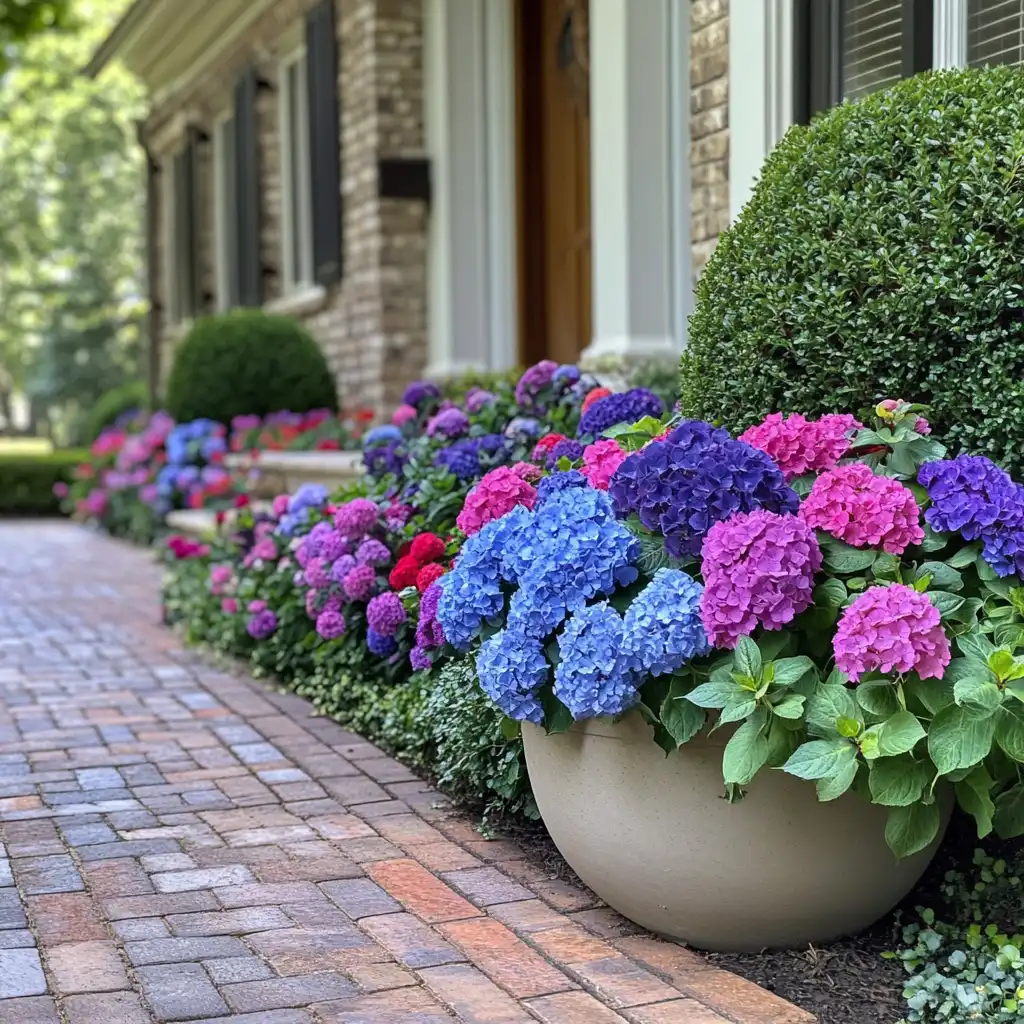
Adding planters to your flower garden design brings flexibility, height variation, and creative freedom. Whether your space is limited or sprawling, using containers is one of the most adaptable flower garden ideas—ideal for creating focal points or layering colors where in-ground planting isn’t practical.
Ways to use planters effectively:
- Choose bucket-style or ceramic containers to complement the garden’s aesthetic.
- Fill with trailing flowers like petunias in shades of white, purple, or pink for a cascading effect.
- Pair planters with nearby in-ground plants like hydrangeas to create depth and contrast in both color and form.
- Move planters as needed to optimize sunlight exposure or freshen up seasonal displays.
Container gardening also allows for better control of soil composition and water drainage, making it easier to grow more delicate or high-maintenance plants. Bonus: they’re perfect for decks, patios, or accenting entrances.
🌿 16. Conceal the Edge for Seamless Transitions
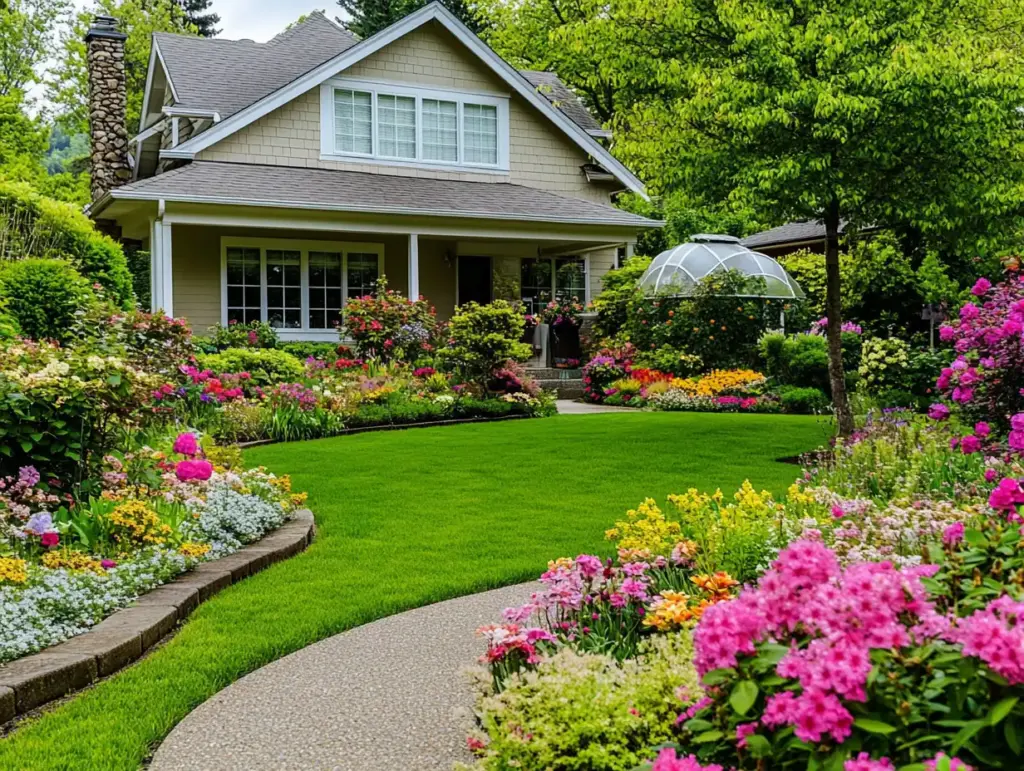
Sharp lawn edges or hard garden borders can disrupt the natural flow of your outdoor space. One of the cleverest flower garden ideas is to blend and conceal these edges using densely planted flowers and foliage, creating a more cohesive, organic appearance.
Tips to achieve a soft transition:
- Use tall or bushy plants like Cleome to blur the lines between lawn and flower bed.
- Plant a variety of colors and heights—from bright reds and pinks to soft whites and yellows—for a lush, multicolored edge.
- Incorporate evergreens and trailing groundcovers to fill in gaps and add year-round coverage.
- A hand-spade-edged lawn adds subtle definition without looking harsh.
This technique gives your garden a mature, well-established look while keeping it visually dynamic. It also encourages beneficial insects and reduces the need for harsh edging materials or maintenance.
⚪ 17. Consider a Monotone Look for Modern Elegance
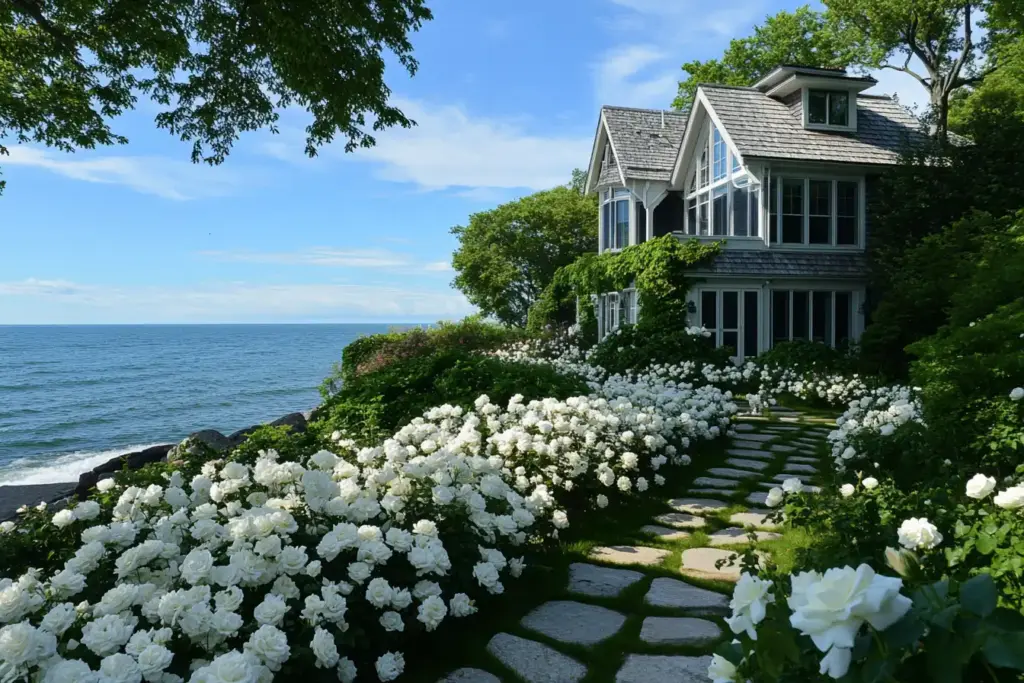
If bold color combos aren’t your style, a monotone garden design offers a clean, sophisticated take on traditional flower garden ideas. By using one color in various tones and textures, you can create dramatic visual impact without overwhelming the senses.
Why monotone gardens work:
- They evoke a modern, minimalist aesthetic—especially effective in structured or contemporary landscapes.
- A unified color palette, like all white flowers, creates a sense of calm and simplicity.
- Plants like white impatiens, alyssum, or shasta daisies can be layered to add interest while sticking to one hue.
In the example of a stone stairway lined with white impatiens, the look is striking yet serene—perfect for enhancing architectural features or providing contrast to dark materials like brick or wood. A monotone scheme doesn’t have to be boring; it’s all about balance, repetition, and texture.
🌳 18. Make It Formal with Symmetry and Structure
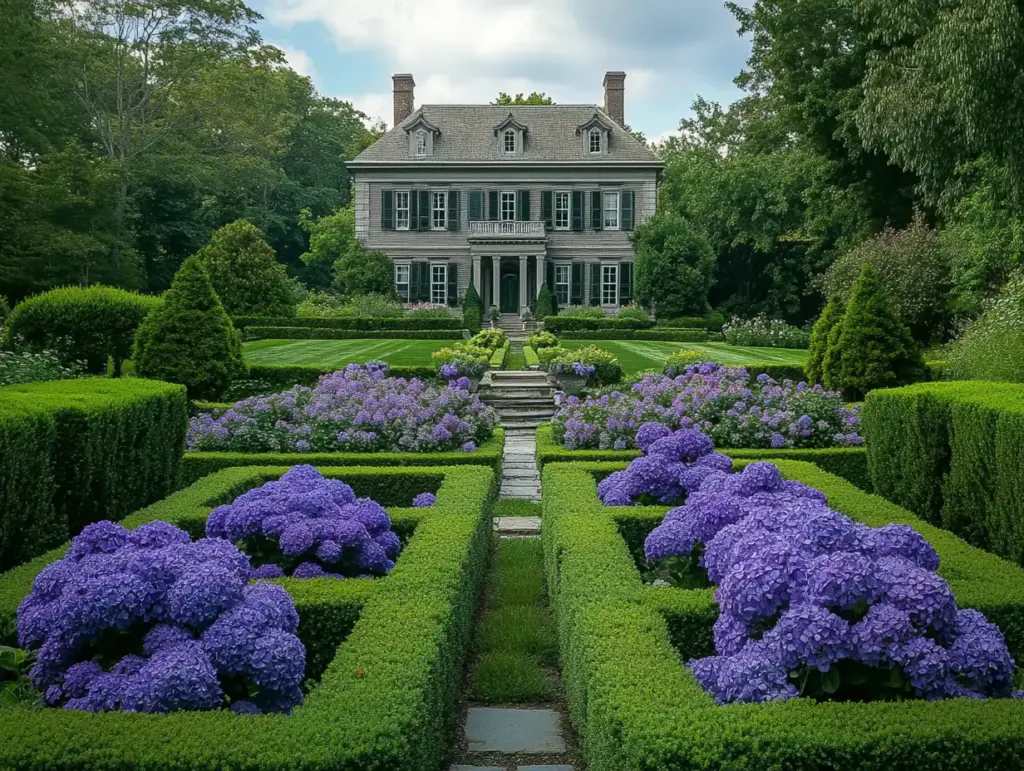
Formal garden design emphasizes clean lines, symmetry, and elegant order, making it one of the most timeless and sophisticated flower garden ideas. A formal layout provides a framework for showcasing your favorite blooms in a controlled, artistic manner—ideal for front yards, courtyard gardens, or estate-style landscapes.
To create a formal floral setting:
- Use neatly clipped hedges (like boxwood or privet) to define symmetrical flower beds.
- Choose flowers with upright or uniform growth habits—such as Cleome, hydrangeas, and clematis.
- Repeat plantings in mirrored beds or rows to reinforce symmetry.
- Add focal points like urns, fountains, or statuary to create visual anchors.
This style allows you to combine order and beauty, giving your garden a regal, curated appearance while still allowing seasonal blooms to shine. Formal gardens pair especially well with classic architecture or traditional entryways.
❓ Frequently Asked Questions About Flower Garden Ideas
1. What is the best layout for a flower garden?
The best layout depends on your space and design goals. For a formal look, go for symmetrical flower beds and straight pathways. Prefer something more organic? Try layered plantings and curved border garden ideas for a relaxed feel. Just be sure to plan according to your sunlight, soil, and plant height needs.
2. How do I choose flowers for my garden?
Choose based on your climate zone, available sunlight, soil condition, and bloom times. For ideas, see our guide to full-sun perennials or explore longest blooming flowers. Mix annuals for color pops and perennials for structure.
3. Can I mix vegetables and flowers in the same bed?
Absolutely! This method, known as a potager garden, creates a beautiful and productive mix. You can even combine blooms with herbs—check out our ideas for backyard vegetable garden inspiration that blends form and function.
4. How often should I water my flower garden?
Most flower gardens need around 1 inch of water weekly, but that varies with plant type and climate. Early morning deep watering helps promote strong roots and prevents disease. Learn more from our post on perennial care and watering tips.
5. What flowers are low-maintenance but offer great visual impact?
Try drought-tolerant plants like lavender, catmint, coneflowers, and zinnias. These thrive with minimal effort and bloom reliably across seasons.
6. How do I keep my flower garden blooming all season?
Use a mix of early, mid, and late-season flowers. Regularly deadhead spent blooms, fertilize, and apply mulch to retain moisture and suppress weeds. These small habits go a long way in maintaining year-round beauty.
7. Do flower gardens attract pollinators?
Yes! Incorporating nectar-rich flowers like bee balm, cosmos, and echinacea encourages a healthy garden ecosystem. For a more natural look, explore our wildflower garden guide.
🌼 Conclusion: Create Your Dream Garden with These Flower Garden Ideas
From wild and whimsical to structured and elegant, these flower garden ideas offer inspiration for every style, space, and skill level. Whether you’re crafting curved borders, enhancing your front yard appeal, or incorporating raised beds into your layout, the key is to match your plant selection to your garden’s unique sunlight, soil conditions, and overall vibe.
Start small with colorful flower bed ideas or go bold with layered designs that include long-blooming perennials. No matter where you begin, intentional planning and plants you love will help your space evolve into a living work of art—one that blooms beautifully season after season.
🌿 Love gardening inspiration? Follow me on Pinterest for bold plant ideas, tips, and seasonal color!
More Posts
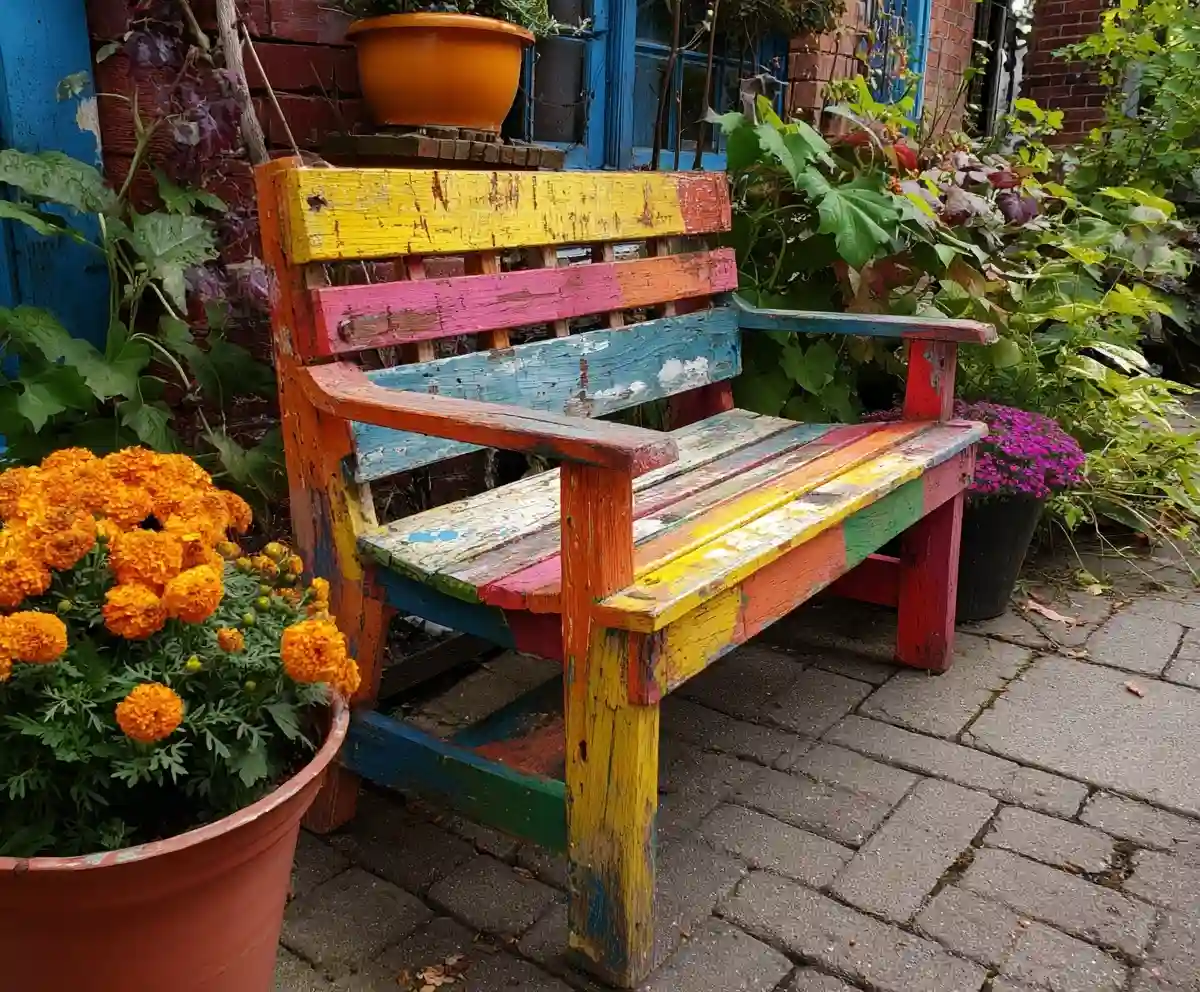
19+ Budget-Friendly Backyard Makeover Ideas
Backyard makeover ideas can turn even the most ordinary outdoor space into a warm, inviting retreat—without draining your wallet.
Read More →
21 Stunning & Simple DIY Clematis Trellis Designs
DIY clematis trellis designs are a beautiful way to blend creativity with function in your garden.
Read More →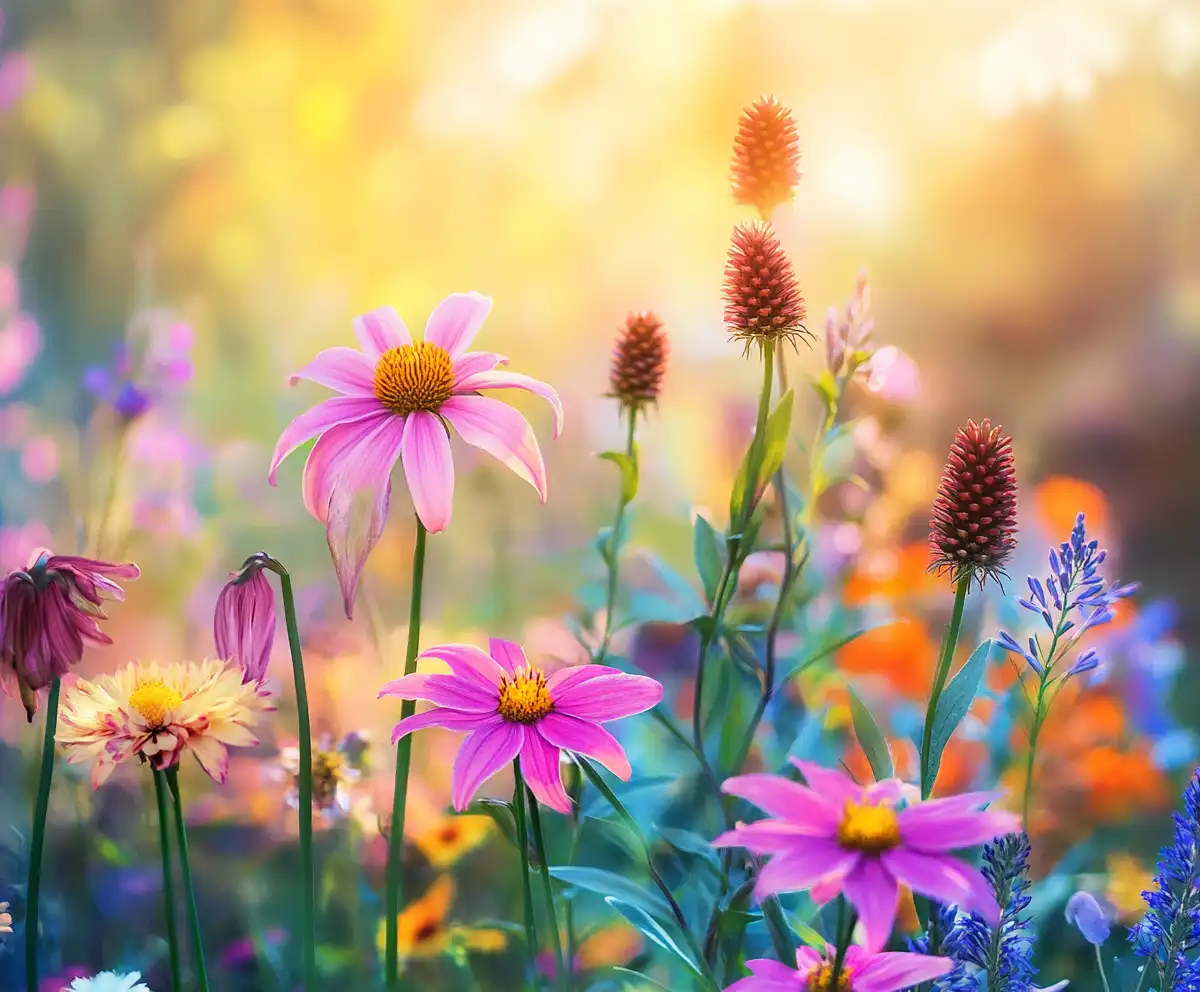
12 Full Sun Perennials That Bloom All Summer
Explore a selection of hardy perennials that flourish and bloom beautifully in full sun throughout the summer.
Read More →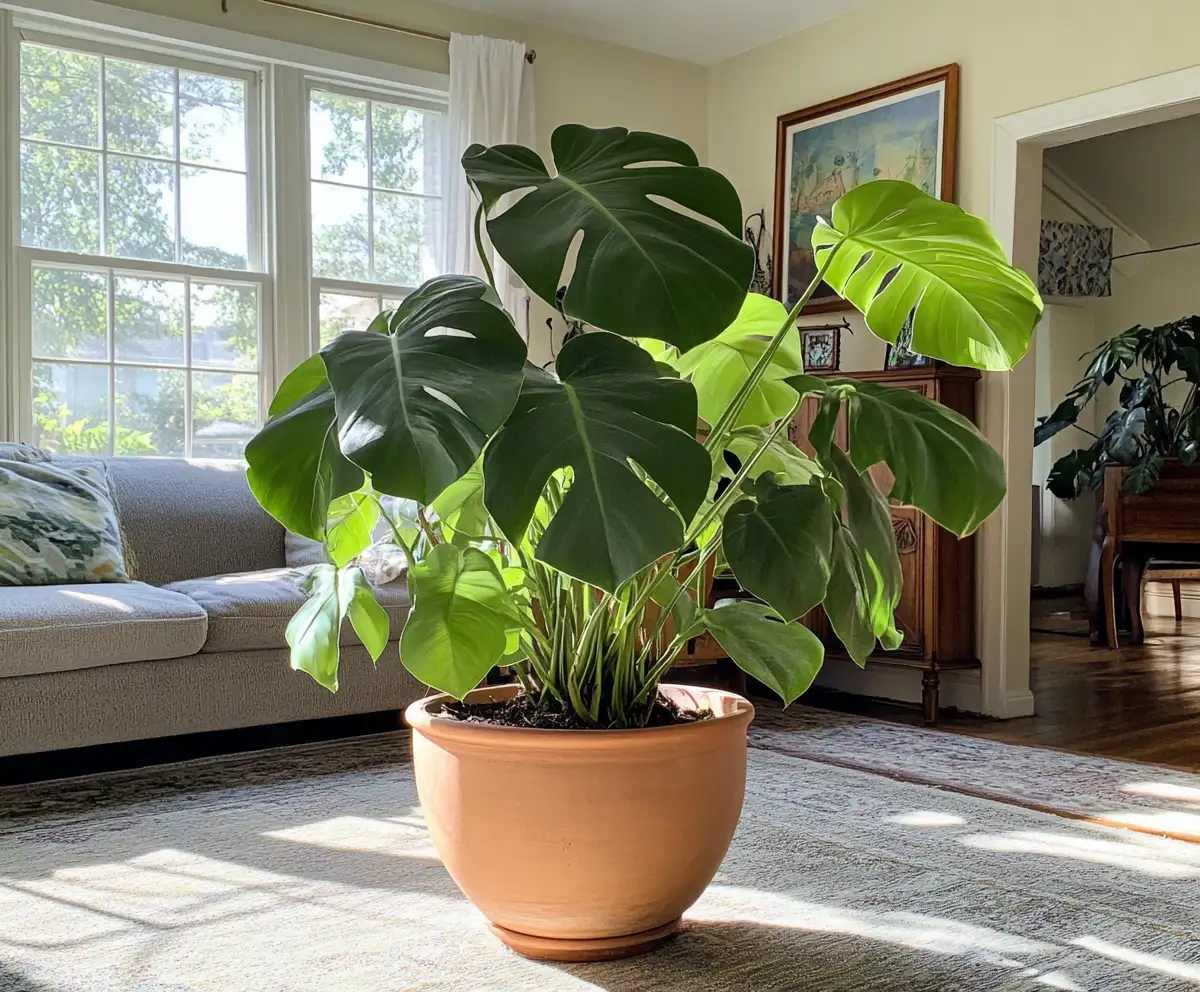
Houseplants for Living Room
Find the perfect houseplants to brighten and purify your living room while adding a touch of nature indoors.
Read More →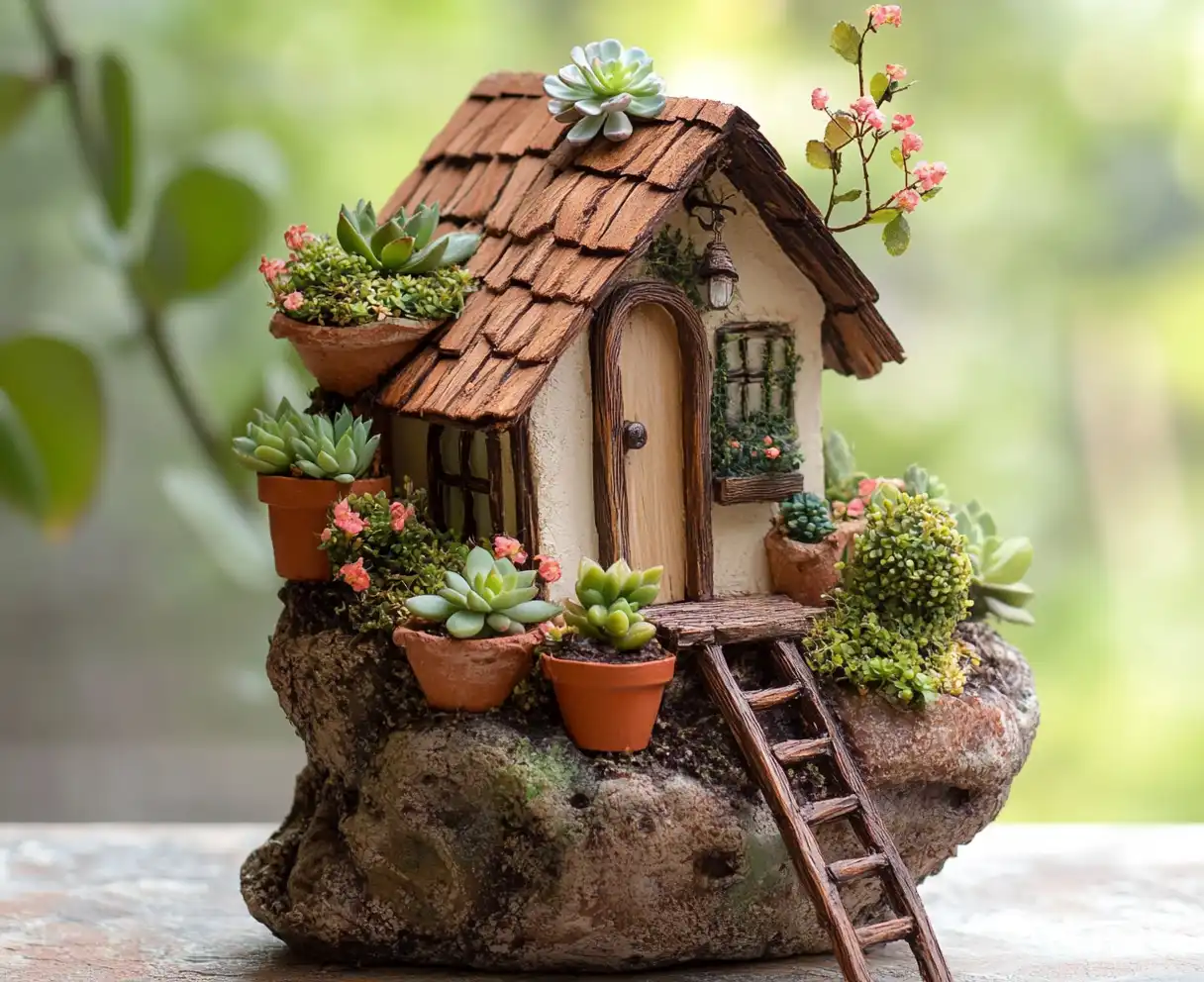
Backyard Play Area for Kids
Create a fun and safe backyard play area for kids with these inspiring design ideas and tips.
Read More →
Top Privacy Trees
Discover top tree varieties that provide natural privacy and enhance your outdoor space.
Read More →

